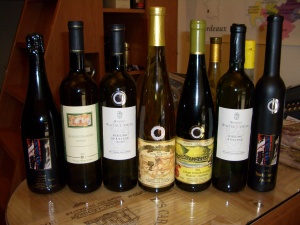 The wide range of grape varieties cultivated in Germany is impressive.
The wide range of grape varieties cultivated in Germany is impressive.
Data compiled by the Federal Bureau of Statistics shows that there are nearly 100 grape varieties grown in normal and/or experimental vineyards. Of these, about two dozen are of commercial importance, above all, Riesling and Müller-Thurgau, which account for some 35.3% of Germany’s 105,000 hectares of vineyards. Nearly 11.5% of the vineyard area is planted with Spätburgunder, or Pinot Noir, making it the most important red wine grape in Germany.
Because climatic factors vary from region to region, so does each region’s varietal profile. In the more northerly areas, Riesling predominates, while further south, the Burgunder, or Pinot, varieties and red wine grapes play a more important role. More than 78.8% of the Rheingau’s vineyards are planted with Riesling, which is also the premier grape in the Mosel region, Mittelrhein and Hessische Bergstrasse (more than 50%). Riesling is also important (more than 20%) in Württemberg, the Pfalz and the Nahe. In terms of area, Müller-Thurgau (Rivaner) is the most important grape variety in Franken and Rheinhessen, as well as in Saale Unstrut and Sachsen. Silvaner is a traditional variety in Rheinhessen and Franken, while the Burgunder (Pinot) family is widely planted in Baden, particularly the red wine grape Spätburgunder (Pinot Noir). Red grape varieties are also important in Württemberg, where Trollinger, Schwarzriesling (Pinot Meunier) and Lemberger are cultivated, and in the Pfalz, with the Portugieser grape.
- Riesling
- Müller-Thurgau
- Silvaner
- Kerner
- Bacchus
- Scheurebe
- Grauer Burgunder
- Weißer Burgunder
- Faberrebe
- Huxelrebe
- Gutedel
- Morio-Muskat
- Ortega
- Elbling
- Gewürztraminer
- Chardonnay
Red Wines
- Spätburgunder
- Portugieser
- Dornfelder
- Trollinger
- Schwarzriesling
- Lemberger
- Dunkelfelder
- Heroldrebe
- Domina


